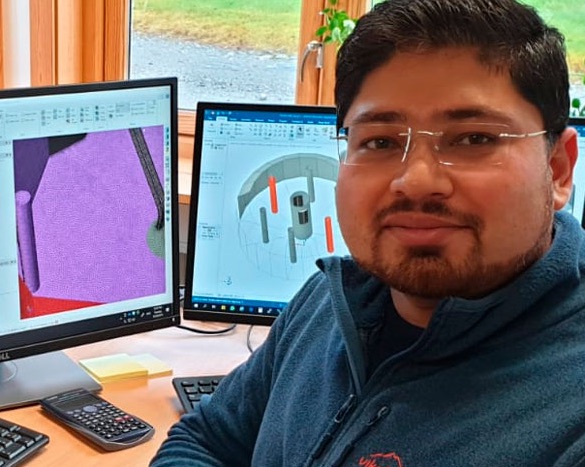
News & Views
Fish Health
Recirc
Research
Technology
Norwegian researcher seeks to achieve ‘ideal tank’ for RAS
January 17, 2020 By Nestor Arellano
 Khurram Shahzad (Photo credit: Andre Merian © Nofima)
Khurram Shahzad (Photo credit: Andre Merian © Nofima) Achieving optimal water flow are critical in recirculating aquaculture system (RAS) tanks to ensure that ideal conditions and factors necessary for fish health are present in land-based, closed containment environments.
However, designing the ideal tank can be a very expensive and labour-Intensive experimental process.
This is where computer modeling can help, according to a recent blog posted on the website of Norway-based fisheries research institute, Nofima.
Nofima is the host institution of CtrlAQUA, a research centre focused on studying innovation in land-based aquaculture systems.
Khurram Shahzad of CtrlAQUA is currently investigating how water currents behave in small and large tanks. The objective of his research is to determine how to improve water flow through computational fluid dynamics and simulations.
“The main purpose of my calculations is to help the industry to develop optimal fish farming tanks that provide the fish with adequate swimming conditions and ensure that oxygen and feed is distributed evenly in order to avoid ‘dead zones,’” said Shahzad. “Facilitating the right hydrodynamics in the tanks will mean reduced energy consumption and improved salmon welfare in land-based farming.”
Shahzad believes that if done right, RAS tanks can be self-cleaning.
The aquaculture industry is progressively moving towards larger land-based RAS and semi-closed containment systems, he said. The larger the tanks, the more complex the system. With complexity comes a higher degree of water turbulence which impacts distribution of gasses, feed and fish.
Turbulence are produced by tank inlet orientations, inlet (nozzles) and outlet positioning and internal structures.
“The designing of those inlet columns plays a vital role for achieving a more uniform mixing and flow pattern across the tank,” according to Shahzad’s research, “minor change in inlet column will impact the whole system by removing velocity dead zones plus tank self-cleaning is improved, respectively.”
With computational fluid dynamics (CFD) modeling, researchers can “predict” tank water flow and water velocity. Using computer simulation, researchers can test for hydro dynamics that are most beneficial for fish welfare without having to build actual tanks.
“CFD can help with designing optimal systems and is far cheaper than building before physical testing,” said Shahzad.
Print this page





